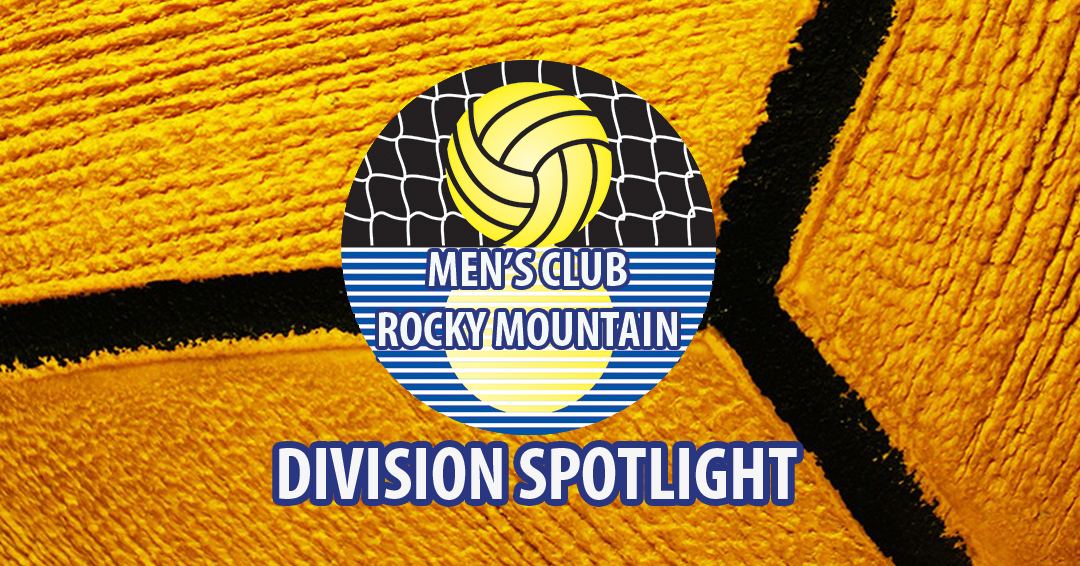BRIDGEPORT, Pa. — The Collegiate Water Polo Association (CWPA) Men’s Collegiate Club Spotlight focuses on the Rocky Mountain Division of Colorado Mesa University, the Colorado School of Mines, Colorado State University, the University of Colorado “A”, the University of Colorado “B”, the University of Denver, the University of New Mexico, the University of Utah “A”, the University of Utah “B”, the University of Wyoming and Utah State University.
HISTORY: Formed in 2007 from the Southwest Division, the Rocky Mountain Division has seen Utah and Colorado reign as the prominent programs.
Colorado holds six championships (2008, 2010, 2014, 2015, 2016, 2017) and a trio of runner-up finishes (2007, 2009, 2019), while Utah has captured five crowns (2007, 2009, 2012, 2018, 2019) along with seven second place marks (2008 2010, 2011, 2013, 2015, 2016, 2017).
Colorado Mines placed second in 2019, while former division member Arizona State University holds a pair of championships (2011, 2013) and a second place spot (2014).
Former division member the University of Arizona holds the remaining championship game appearance as the Wildcats notched a runner-up berth in 2012.
On the national level, a Rocky Mountain Division champion has never reached the Men’s National Collegiate Club Championship title game. However, Colorado appeared in the 1997 title game against Dartmouth College while a member of the Southwest Division.
Rocky Mountain Division Champion/Runner-Up
- 2007 – University of Utah / University of Colorado
- 2008 – University of Colorado / University of Utah
- 2009 – University of Utah / University of Colorado
- 2010 – University of Colorado / University of Utah
- 2011 – Arizona State University / University of Utah
- 2012 – University of Utah / University of Arizona
- 2013 – Arizona State University / University of Utah
- 2014 – University of Colorado / Arizona State University
- 2015 – University of Colorado / University of Utah
- 2016 – University of Colorado / University of Utah
- 2017 – University of Colorado / University of Utah
- 2018 – University of Utah / Colorado School of Mines
- 2019 – University of Utah / University of Colorado
National Collegiate Club Champion/Runner-Up
- 1997 – Dartmouth College / University of Colorado
THE TEAMS: The Rocky Mountain Division covers a vast area and is comprised of teams from Colorado (five), New Mexico (one), Utah (two) and Wyoming (one).
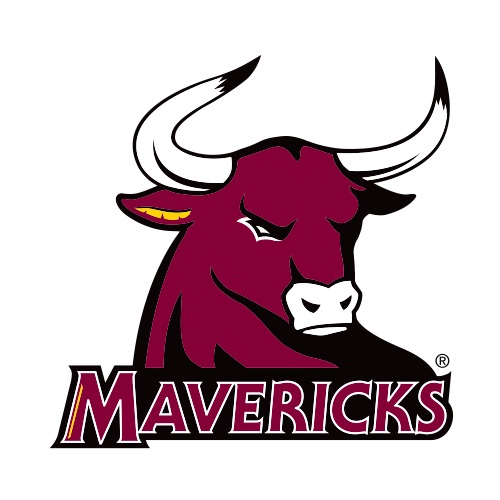 Colorado Mesa University
Colorado Mesa University
Among the newest programs in the men’s Rocky Mountain Division, Colorado Mesa University is a public university in Grand Junction, Colo. The university also has other campuses as well: Bishop Campus, which houses Western Colorado Community College in northwestern Grand Junction; and a regional campus in Montrose, Colorado. Colorado Mesa University offers programs leading to awards in four levels: technical certificates, associate degrees, baccalaureate degrees and master’s degrees. .
The school was previously known as Mesa State College. However, the college attained university status in August 2011 and changed its name to Colorado Mesa University.
The campus is comprised of approximately 11,000 students and the collegiate club team is open to all athletes of varying levels of experience, from those who only have engaged in swimming for a few years to players who have competed in water polo for longer tenures. Practices are open to any students wanting to explore or enjoy the sport; however, tournaments and competitions are restricted to active club members only.
For more information on the Colorado Mesa men’s collegiate club team, contact John Hildebrand (john@autopaychecks.com)
- Facebook (@CMUWaterPolo)
- Website (cmumavericks.com/sports/2018/10/23/about-cmu-water-polo.aspx)
Colorado School of Mines
The 2018 Rocky Mountain Division runner-up, the Colorado School of Mines is a public research university in Golden, Colo. The institution is focused on science and engineering, where students and faculty together address the great challenges society faces today−particularly those related to the Earth, energy and environment.
Ranked as the top institution in the world for mineral and mining engineering, Colorado Mines is organized around 16 academic departments and 14 interdisciplinary programs: Advanced Manufacturing; Advanced Energy Systems; Applied Mathematics and Statistics; Chemical and Biological Engineering; Chemistry; Civil and Environmental Engineering; Computer Science; Economics and Business; Electrical Engineering; Energy; Engineering, Design and Society; Geochemistry; Geology and Geological Engineering; Geophysics; GIS and Geoinformatics; Humanities, Arts and Social Sciences; Mechanical Engineering; Metallurgical and Materials Engineering; Military Science/ROTC; Mining Engineering; Nuclear Science and Engineering; Operations Research with Engineering; Petroleum Engineering; Physics; Quantitative Biosciences and Engineering; Space Resources; Underground Construction and Tunneling.
Mines began the world’s first graduate program in space resources in the Fall Semester of 2018, offering both master’s and PhD degrees.
For freshmen entering Fall 2019, Colorado School of Mines received 11,756 applications, accepted 6,240 (53.1%) and enrolled 1,282 (20.5% of those accepted). Men constituted 66.1% of the incoming class, women 33.9%.
Each spring semester, the Colorado School of Mines students and faculty celebrate E-days (or Engineering Days). This three-day festival is kicked off Friday morning with the “Ore Cart Pull”. This event consists of students collectively pulling an ore cart 7.5 miles down Colfax Ave to the Colorado State Capitol in Civic Center Park. Other attractions of this event include a cardboard boat race down nearby Clear Creek, a concert featuring a community-voted artist, and a large fireworks show Saturday night to end the festival, among many other small campus-hosted events.
Freshmen at the Colorado School of Mines are expected, but not required, to participate in the M Climb. During this climb, students carry a ten-pound rock brought from their hometown up Mt. Zion. At the top of the mountain, they are then told to whitewash the M. While also being a mild hazing tradition, students take great pride in this process as it symbolizes the struggle they endure at the school to reach their goals. At graduation time, seniors are invited to return to the M and retrieve a rock to keep. This symbolizes the students taking the knowledge and skills they’ve learned with them into the next stage of their lives.
For more information on the Colorado Mines men’s collegiate club team, contact either William Liebelt (liebelt@mymail.mines.edu) or Cameron Webb (crwebb@mymail.mines.edu).
- Facebook (@mineswaterpolo)
- Twitter (@mineswaterpolo)
- Website (minesathletics.com/sports/cmwp)
 Colorado State University
Colorado State University
Colorado State University is a public research university in Fort Collins, Colo. The university is the state’s land grant university and the flagship university of the Colorado State University System.
The university has approximately 2,000 faculty in eight colleges and 55 academic departments. Bachelor’s degrees are offered in 65 fields of study, with master’s degrees in 55 fields. Colorado State confers doctoral degrees in 40 fields of study, in addition to a professional degree in veterinary medicine.
Colorado State is located at the base of the Front Range of the southern Rocky Mountains. The university’s 583-acre main campus is located in central Fort Collins, and includes a 101-acre veterinary teaching hospital. CSU is also home to a 1,438-acre Foothills Campus, a 1,575-acre agricultural campus and the 1,177-acre Pingree Park mountain campus. CSU uses 4,043 acres for research centers and Colorado State Forest Service stations outside of Larimer County.
Colorado State offers 150 programs of study across 8 colleges and 55 departments. In addition to its notable programs in biomedical sciences, engineering, environmental science, agriculture, and human health and nutrition, CSU offers professional programs in disciplines including business, journalism, and construction management as well as in the liberal and performing arts, humanities, and social sciences. CSU also offers bachelor’s degrees, graduate degrees, certificates, and badges online. CSU awarded 6,090 degrees in 2009–2010, including 4,336 bachelor’s degrees, 1,420 master’s degrees, 203 doctoral degrees, and 131 Doctor in Veterinary Medicine degrees.
The school;’s mascot of the Ram is the latest edition of an image for Colorado State. In 1909, there was a black bear cub that served as the mascot – but he disappeared the same year. He was replaced by Peanuts the Bulldog in 1912. Peanuts was purchased by a student and would roam around campus, he was fed peanuts by the students, which lead to his nickname. Peanuts was poisoned by University of Colorado and died in 1918. After Peanuts’ death, an alumnus donated a different Bulldog named Gallant Defender. The first ram to be mascot of Colorado State University was Buck, introduced in 1946 and the mascot has remained since that time.
For more information on the Colorado State men’s collegiate club team, contact Ben Wok (waterpolocsu@gmail.com).
- Facebook (@wpolocsu)
- Website (csurec.colostate.edu/sport-clubs/water-polo/)
University of Colorado
A six-time Rocky Mountain Division (2008, 2010, 2014, 2015, 2016, 2017) and three-time runner-up (2007, 2009, 2019), the University of Colorado fielded both “A” and “B” teams during 2019 season.
Colorado, which also claimed a pair of Southwest Division crowns (1998, 2001) with four second place marks (1997, 1999, 2000, 2002), is the only Rocky Mountain team to appear in the Men’s National Collegiate Club Championship title game as the Buffaloes achieved the feat in 1997 against Dartmouth College.
The flagship university of the University of Colorado System. the school is located in Boulder, Colo. Founded in 1876, five months before the Colorado was admitted to the United States, the university has more than 33,000 undergraduate and graduate students. It offers more than 2,500 courses in more than 150 areas of study through its nine colleges and schools.
The main CU Boulder campus is located south of the Pearl Street Mall and east of Chautauqua Auditorium. It consists of academic and residential buildings as well as research facilities. The East Campus is about a quarter mile from the main campus and is composed mainly of athletic fields and research buildings. CU Boulder’s campus has been ranked as one of the most beautiful college campuses in the United States by Travel + Leisure and Condé Nast Traveler.
The University of Colorado Boulder is divided into several colleges and schools. While the College of Arts and Sciences is by far the largest, the university also consists of the College of Engineering and Applied Sciences, the Program in Environmental Design, Education, Music, Law, and the Leeds School of Business, plus a new College of Media, Communication and Information that debuted in 2014. Most, if not all, of these colleges and schools also incorporate masters and doctorate level degree programs. At the University, there are currently approximately 3,400 courses available in over 150 disciplines comprising 85 majors ranging from Accounting to Women’s Studies.
University of Colorado School of Law is the smallest and most selective of the colleges. The Wolf Law Building, the new home of the Law School, was dedicated on September 8, 2006, by United States Supreme Court justice Stephen Breyer.
The Leeds School of Business has an enrollment of 3,300 students including undergraduates, master’s candidates, and Ph.D. candidates. The undergraduate program ranks 39th in the country and the undergraduate entrepreneurship program ranks 14th in the nation. The MBA program ranks 26th among all public universities.
Undergraduates who seek an academic challenge may participate in CU’s Honors Program. Begun in 1931, the Honors Program currently consists of the top ten percent of incoming freshmen and participating undergraduates with a 3.3 GPA or greater (on a 4.0 scale). The program offers over 40 honors classes each semester taught by tenured or tenure-track professors and limited to class sizes of 15 students. Honors students also have the opportunity to graduate with honors, high honors, and highest honors, by writing and defending a thesis during their senior year. The program extends into the residence halls through the Kittredge Honors Program. The Presidents Leadership Class is a program for top scholars at the University of Colorado Boulder. Scholars participate in a four-year leadership development program. The program provides opportunities to the top fifty students at CU from every major and discipline.
In terms of admissions, Colorado received 31,326 freshmen applications and admitted 24,941 (80% acceptance rate). Student population is predominantly caucasian and the majority of students are Colorado residents.
For more information on the Colorado men’s collegiate club team, contact either Clayton Wenthur (claytonwenthur@gmail.com) or Max House (max.house88@gmail.com).
- Facebook (@CUBoulderWaterPolo)
- Website (www.colorado.edu/recreation/sport-clubs/list-sport-clubs/water-polo-mens)
University of Denver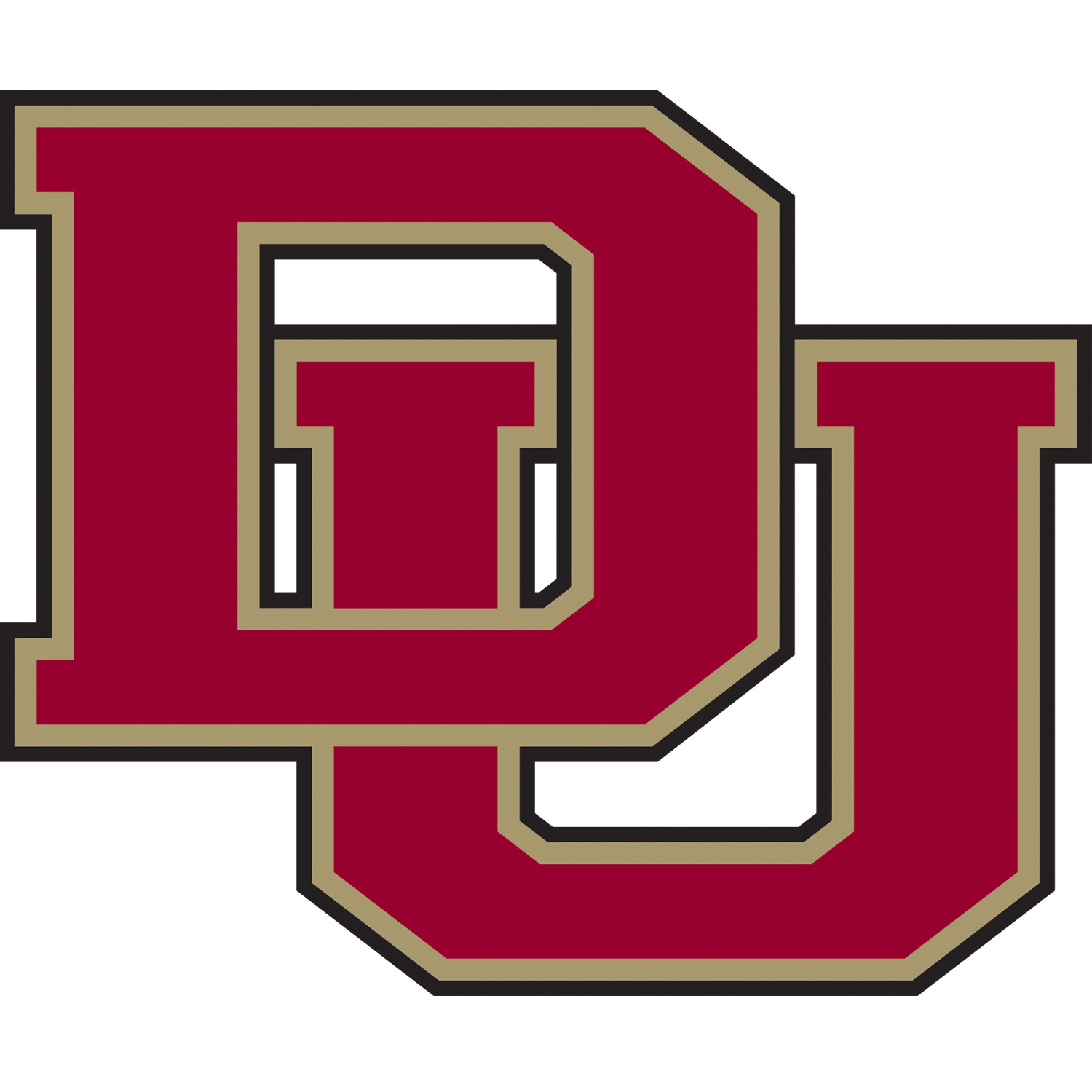
A private research university in Denver, Colo., the University of Denver was founded in 1864 and rates as the oldest independent private university in the Rocky Mountain Region of the United States. Denver enrolls approximately 5,700 undergraduate students and 7,200 graduate students. The 125-acre main campus is a designated arboretum and is located primarily in the University Neighborhood, about five miles south of downtown Denver.
Of the undergraduate student body: the ratio of women to men was 54% women to 46% men and the ratio of race/ethnicity was 68.0% White, 2.2% Black, 12% Hispanic, 3.9% Asian or Pacific Islander, and >1% American Indian, with roughly 5% mixed. Roughly over 53% of the incoming freshman class was in the top 10% of their graduating high school class. Denver likes to promote inclusiveness; therefore, there are numerous programs and people available to help transfer (or international students). 6% and 5% of the undergraduate and graduate student bodies were international, respectively. Students in the graduate programs represent over half of the total enrollment of the school.
The University of Denver has almost 70.2% of its undergraduate student body study abroad before graduation, placing it first in the nation among all doctoral and research institutions in percentage of undergraduate students participating in study abroad programs. The top destinations of DU students are the United Kingdom, Spain and Italy, however many students go to universities in Australia, New Zealand and Scotland.
The school’s mascot since 1925 has been the Pioneers. Previous mascot characters were Pioneer Pete (1920s to 1968), Denver Boone (1968 to 1998) and Ruckus the Red-Tailed Hawk (1998 to 2007) as there is not a character for Denver at this time.
For more information on the Denver men’s collegiate club team, contact John Drury (du.mens.club.water.polo@gmail.com).
- Twitter (@DUClubWaterPolo)
- Website (ritchiecenter.du.edu/sports/2020/5/5/adult-water-polo.aspx)
University of New Mexico
Founded in 1889 and offers bachelor’s, master’s, doctoral, and professional degree programs, the University of New Mexico is a public research university located in Albuquerque, N.M.
New Mexico offers more than 215-degree and certificate programs, including 94 bachelor, 71 masters and 37 doctoral degrees, through 12 colleges and schools. The institution has both a school of medicine and a school of law in addition to majors in management, education, fine arts, nursing, pharmacy, engineering, architecture & planning and public administration among others.
The University of New Mexico Model United Nations, known as World Affairs Delegation or WAD, team is one of the top ranked teams in the country, with multiple awards at several different competitions, most notably, the Harvard World Model United Competition in Geneva, Switzerland and Puebla, Mexico. Most recently, the team won the Diplomacy Award and The Resolution Fellowship, both in Panama City, Panama. They have also competed and won awards at the St. Mary’s University Model Organization of American States Conference.
Traditions at the school include:
- The Hanging of the Greens is a celebration held in early December for the holiday season, when the campus is decorated with thousands of farolitos (a small paper lantern) and a procession of carolers winds through the campus to the University House, which is opened for visitors and where cocoa and bizcochitos (a crisp cookie) are served.
- Red Rally is a large bonfire and rally held on the Thursday before the football game with UNM’s rival New Mexico State University. During Red Rally, a large effigy of an Aggie, the mascot of NMSU, is burned to the ground.
- UNM Fiestas are an end-of-the year celebration held in the spring which includes a community service event called Spring Storm and a large concert.
For more information on the New Mexico men’s collegiate club team, contact Patrick Kelly (p162534k@gmail.com).
- Facebook (@unmwaterpoloclub)
- Instagram (@unmwaterpolo)
- Twitter (@unmwaterpolo)
- Website (unmwaterpolo.weebly.com)
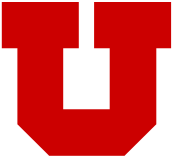 University of Utah
University of Utah
A five-time Rocky Mountain Champion (2007, 2009, 2012, 2018, 2019) and seven-time runner-up (2008, 2010, 2011, 2013, 2015, 2016, 2017), the University of Utah fielded both “A” and “B” teams during the 2019 season.
Utah, which previously posted a trio of second place marks in the Southwest Division (2003, 2004, 2005), is a public research university in Salt Lake City, Utah. As the state’s public flagship institution and top-tier research university, the U (as the school is known) is classified by the Carnegie Foundation among the 131 research universities with the “highest research activity”. Graduate studies include the S.J. Quinney College of Law and the School of Medicine, Utah’s first medical school. As of Fall 2019, there were 24,485 undergraduate students and 8,333 graduate students, for an enrollment total of 32,818.
The university was established in 1850 as the University of Deseret by the General Assembly of the provisional State of Deseret, making it Utah’s oldest institution of higher education. It received its current name in 1892, four years before Utah attained statehood, and moved to its current location in 1900.
Utah, which operates on a semester calendar with the rest of the Utah higher education system, organizes its 150 academic departments and programs into 17 colleges and schools: College of Architecture and Planning; David Eccles School of Business; School for Cultural and Social Transformation; School of Dentistry; College of Education; College of Engineering; College of Fine Arts; College of Health; Honors College; College of Humanities; S.J. Quinney College of Law; College of Mines and Earth Sciences; College of Nursing; College of Pharmacy; College of Science; College of Social and Behavioral Science; College of Social Work. The school’s Department of Ballet offers the top ranked ballet and ballroom dance program in the United States and is one of the oldest and most reputable university ballet departments in the country
For the Class of 2023 (enrolling Fall 2019), Utah received 24,404 applications and accepted 15,159 (62%), with 4,249 enrolling. The university uses a holistic admissions process and weighs ACT/SAT standardized test scores, grade point average, grade trend, rigorous AP/IB/Honors classes taken in high school, academic achievements, along with other “personal achievements and characteristics”.
For more information on the Utah men’s collegiate club team, contact Kiffer Creveling (kiffer.creveling@gmail.com).
- Twitter (@Utepolo)
- Website (sites.google.com/view/universityofutahmenswaterpolo/home)
University of Wyoming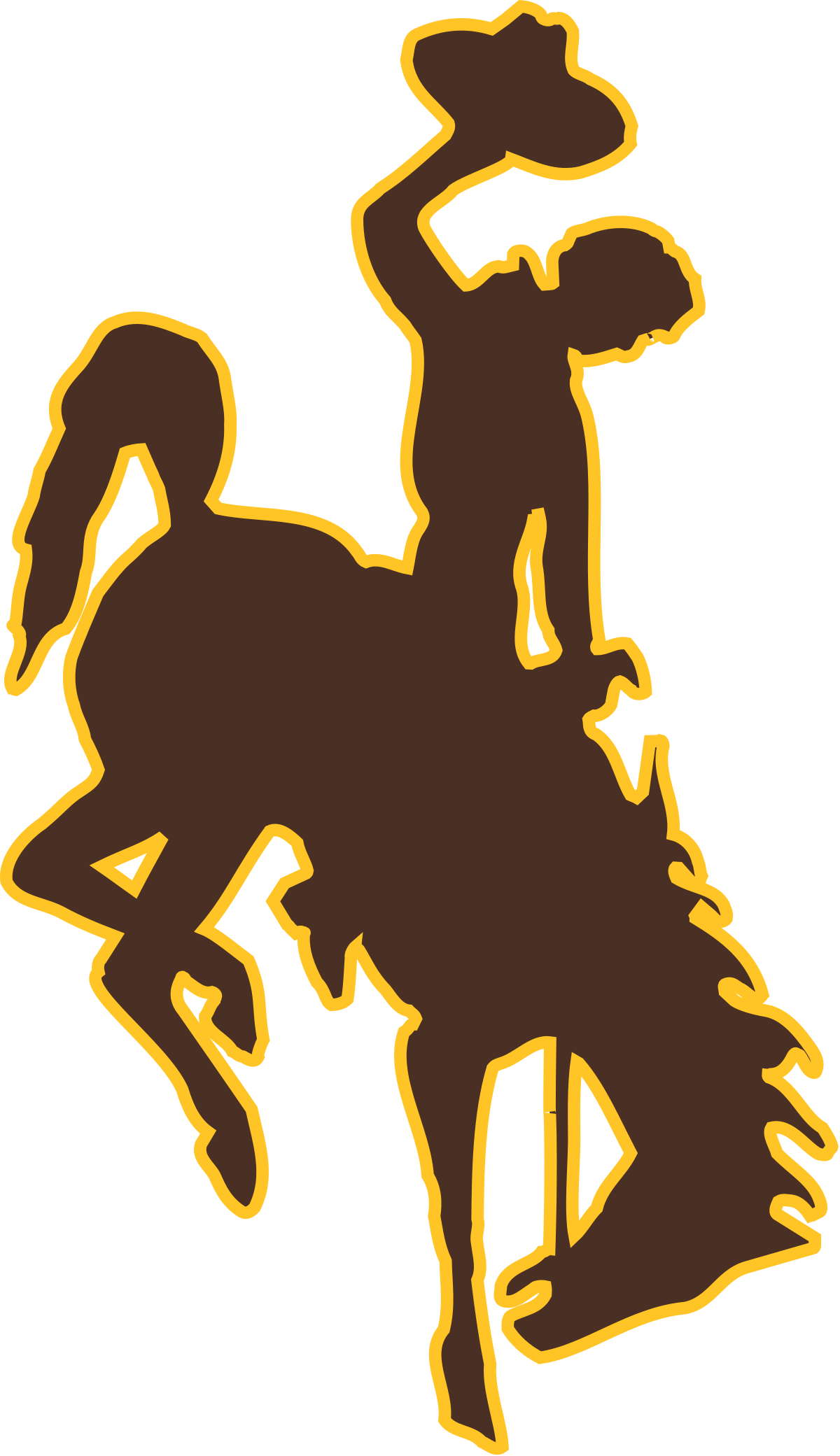
A public research university in Laramie, Wyoming, the University of New Mexico was founded in March 1886, four years before the territory was admitted as the 44th state, and opened in September 1887. The University of Wyoming is unusual in that its location within the state is written into the state’s constitution.
The school consists of seven colleges: agriculture and natural resources, arts and sciences, business, education, engineering and applied sciences, health sciences and law. The university offers over 120 undergraduate, graduate and certificate programs including Doctor of Pharmacy and Juris Doctor.
With a student body of approximately 12,500 students with nearly 10,000 undergraduate students, the school is home to the prestigous University of Wyoming Geological Museum which houses a collection of fossils and minerals with special focus on the history of Wyoming. Exhibits include a copper Tyrannosaurus at the entrance, the initial mounting of the Apatosaurus skeleton centerpiece and the terracotta Stegosaurus and Triceratops panels. One of the most famous exhibits at the museum is the Allosaurus; known as “Big Al”, which has appeared in multiple movies and television shows.
Further, the University of Wyoming Anthropology Museum includes exhibits on early humans, the Colby Mammoth Site, Vore Buffalo Jump and other Wyoming archaeology sites. Also on campus, the University of Wyoming Insect Museum is a research museum that includes mounted insects, a small zoo with living insects and an interactive discovery cabinet.
For more information on the Wyoming men’s collegiate club team, contact either Emma Petersen (epeter20@uwyo.edu) or Jason Wahab (jwahab8@gmail.com).
- Twitter (@wyowaterpolo)
- Website (www.uwyo.edu/rec/club-sports/waterpolo/)
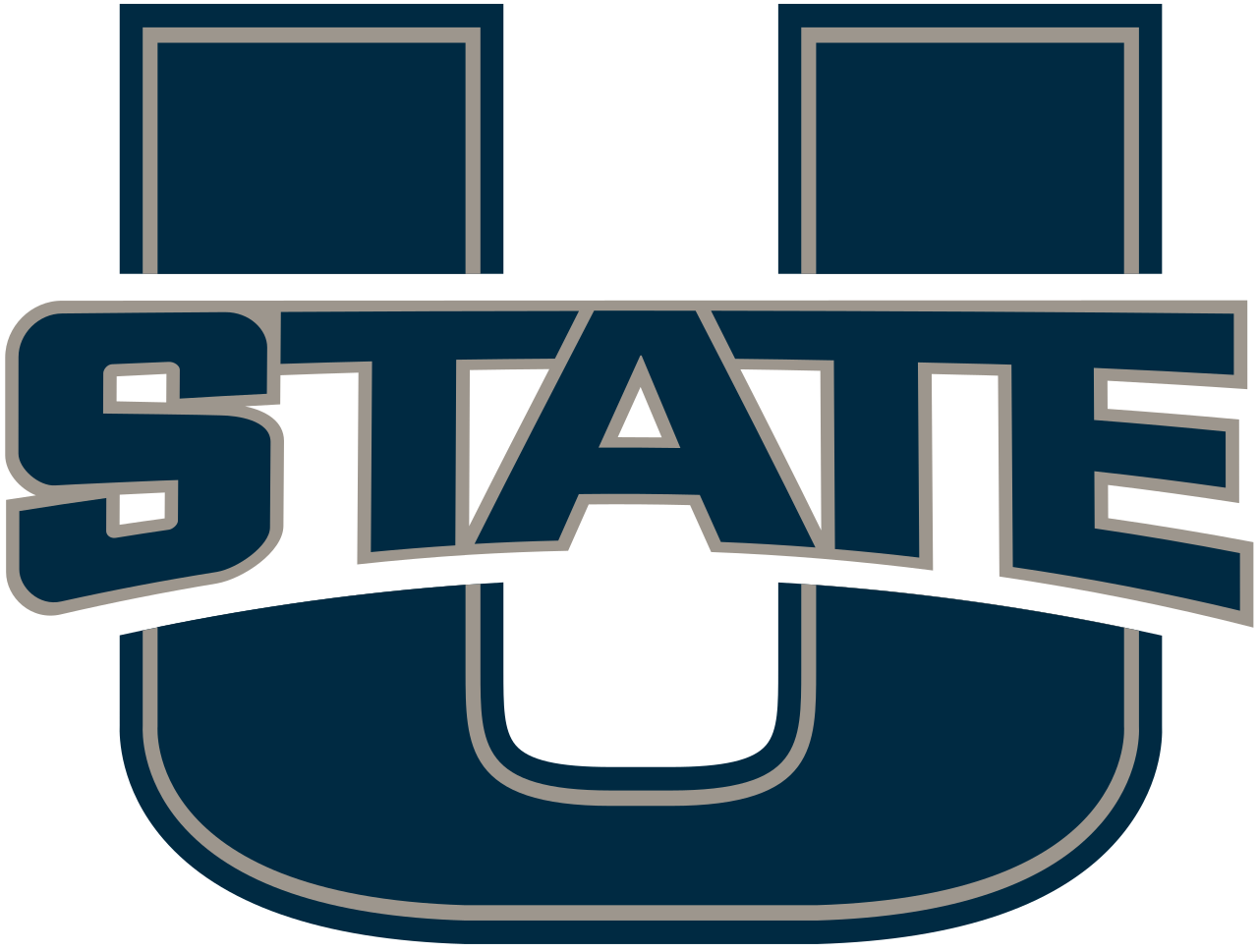 Utah State University
Utah State University
A public research university in Logan, Utah, Utah State University has nearly 20,000 students living on or near campus.
Utah’s largest public residential campus with 27,810 students enrolled including 24,669 undergraduate students and 3,141 graduate students, Utah State has the highest percentage of out-of-state students of any public university in Utah totaling 23% of the student body.
Founded in 1888 as Utah’s agricultural college, USU focused on science, engineering, agriculture, domestic arts, military science, and mechanic arts. The university offers programs in liberal arts, engineering, business, economics, natural resource sciences, as well as nationally ranked elementary & secondary education programs. It offers master’s and doctoral programs in humanities, social sciences, and STEM areas (Science, technology, engineering, and mathematics).
USU has nine colleges and offers 159 undergraduate degrees, 83 master’s degrees and 41 doctoral degrees.
For the Class of 2022 (enrolling fall 2018), USU received 15,099 applications, accepted 13,446 (89.1%), and enrolled 4,429.
For more information on the Utah State men’s collegiate club team, contact either Riley Herzog (rileyzog15@gmail.com) or Caden Hickman (caden@listzero.com).
- Facebook (@usuwaterpolo)
- Instagram (@usuwaterpolo)
- Website (www.usu.edu/campusrec/club_sports/water_polo)

